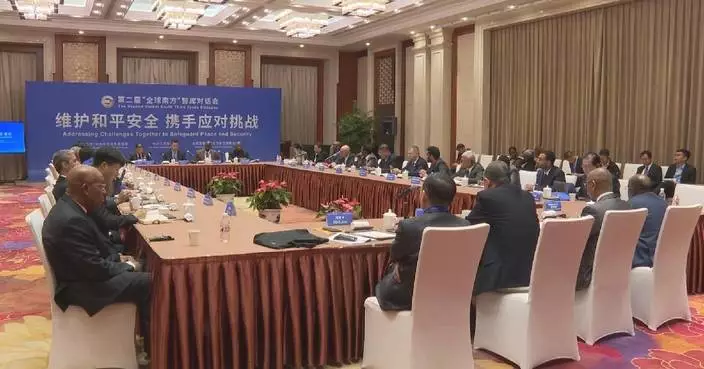German auto giant BMW has experienced leapfrog development over the past three decades in China while riding the wave of the country's own development journey, with the the carmaker's establishment of four Chinese research and development centers highlighting its continued commitment to the country.
As China's reform and opening-up policy has deepened, the demand among Chinese consumers' demand for high-quality cars has also grown rapidly. Thirty years ago, the number of private cars in China was a little over 2 million, but by 2003 this figure had climbed dramatically to exceed 12 million. Two decades later this growth has soared even more drastically, with close to 300 million privately-owned cars in the country.
BMW's foray into the Chinese market began in 1994 when it teamed up with the Brilliance Auto Group to establish a joint venture, which saw multiple factories built in Shenyang City of northeast China's Liaoning Province in the years that followed.
By the mid-2000s, the automaker's sales in China soared from 19,000 vehicles in 2003 to 66,000 in the space of just five years thanks to the success of the joint venture, with the maximum annual growth rate reaching 52 percent.
The expansion has continued and BMW's Shenyang facility has now evolved into the German carmaker's largest production base worldwide and one of its most important new energy vehicle (NEV) bases, with the Chinese market driving the company forward.
"It's the biggest car market in the world. It gives you the biggest opportunity to continue to grow. BMW's 30-year journey reflects really the shared success of this incredible country's development," said Sean Green, President and CEO of BMW China.
China, as the world's largest automobile producer and the biggest country in terms of sales, has significantly accelerated the pace of promoting the development of NEVs in recent years amid the ongoing green transition.
Encouraged by the long-term national strategy, automobile companies have increased investment in research and development of NEVs as they look to step up their market competitiveness.
"In 2005, China formulated a medium - and long-term scientific and technological development plan, and made a clear deployment of energy-saving new energy vehicles. In particular, the country's support for new energy technology was large. By 2020, our country's NEVs have entered a stage of rapid market development," said Wang Hewu, director at the Institute for Carbon Neutrality at Tsinghua University.
During the first nine months of 2024, China sold nearly 7.4 million NEVs in total, skyrocketing by 35.6 percent year on year.
Attracted by the huge market opportunities, BMW continues to increase its investment in China. In April this year, the German auto manufacturer announced an additional investment of 20 billion yuan (over 2.7 billion U.S. dollars) in its production base in Shenyang, launching a strategic adjustment to its production output in the country.
So far, BMW has set up four research and development centers in Beijing, Shanghai, Shenyang and Nanjing, respectively, representing its largest and most complete research and development network outside of Germany.
"We have our largest R and D network outside of Germany, with more than 3,200 engineers. We welcome competition, competition is good. It pushes us harder. And in the end, consumers will benefit," said Green.
The carmarker has also revealed it will soon launch its brand new range of models, known as Neue Klasse, which represents its high-end next-generation new energy technology, with these vehicles set to be put into production in China in 2026.
"The Neue Klasse will make a big step in our car architecture towards electrification, sustainability and, of course, digitalization. And all these we will bring into our Shenyang production network," said Oliver Zipse, chairman of the board of management of BMW Group.

BMW sees leapfrog development since entering Chinese market 30 years ago









